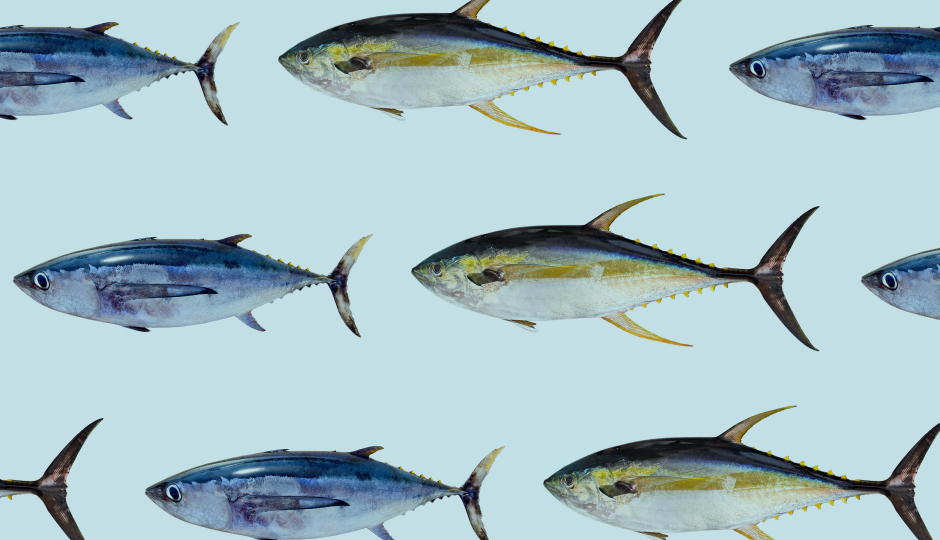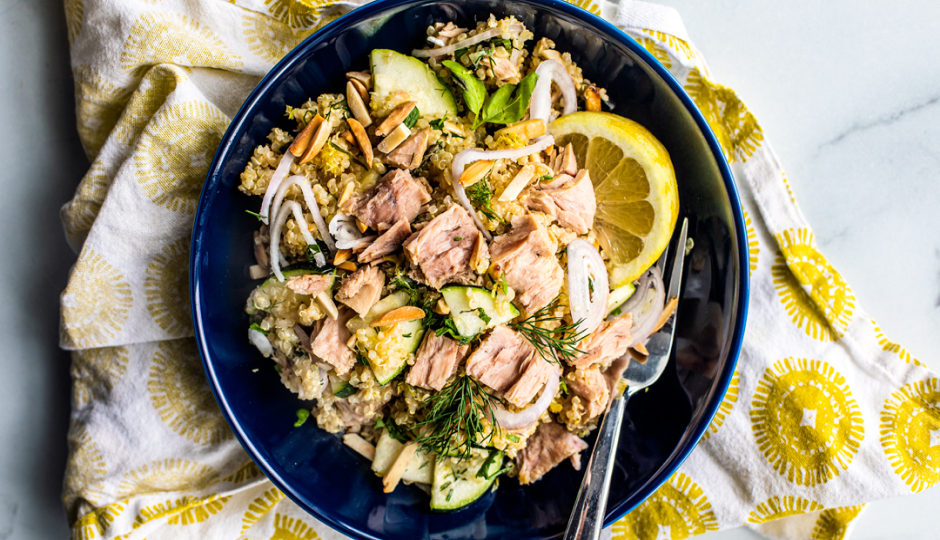Tuna In Oil

In this guide, we cover everything you need to know about making tuna in oil a versatile and tasty addition to your meals.
Types of Tuna in Oil
Tuna in oil is a type of canned tuna that’s been pre-cooked and packed in edible oil, usually olive oil, to enhance its flavor and shelf-life. Here we break out the three main types of tuna used, showing the differences between albacore and chunk light:
| Tuna Type | Often labeled as… | Flavor | Texture |
|---|---|---|---|
| Albacore | “Solid or Chunk White Tuna” | Light, mild flavor (less fishy) | Meaty |
| Yellowfin | “Chunk or Solid Light Tuna” or “Chunk or Solid Yellowfin Tuna” | Bolder flavor | Softer and flakier |
| Skipjack | “Chunk Light Tuna” | Stronger, fishier flavor | Softer and flakier |
Nutritional Benefits
Tuna in oil is packed with nutritional benefits, offering omega 3 fatty acids, protein and essential vitamins and minerals that contribute to a healthy and balanced diet. Let’s dig deeper on the three main benefits:
- Lean protein helps support your muscles, skin, and bones. A can of tuna in olive oil typically contains approximately 29 grams of protein.
- Omega-3 fatty acids support heart health. Canned tuna in oil features EPA and DHA Omega-3 fatty acids, which are good for your heart, brain, and eyes.
- Vitamin D supports your bones and immune system. One can of tuna in oil typically contains 2 mcg of vitamin D.
Popular Recipes
Tuna in oil is a versatile ingredient for salads, pasta, sandwiches, and more. Here are a few top easy-to-make recipes:
Mediterranean-style tuna pasta. To make this yummy Mediterranean-style dish, cook your favorite pasta, toss it with flaked tuna in extra virgin olive oil, add chopped tomatoes, sliced olives, minced garlic, and fresh basil. Finish with a drizzle of olive oil and a sprinkle of Parmesan for a flavorful dish.
Gourmet tuna salad. To whip this one up, combine flaked tuna in oil with fresh greens, capers, and a zesty lemon vinaigrette. Toss everything together for a refreshing and flavorful salad that makes for a light and satisfying meal.
Tuna Puttanesca. Sauté garlic, onions, and anchovies in olive oil, then add canned tuna in extra virgin olive oil, olives, capers, and diced tomatoes. Simmer until flavors meld, and toss with cooked spaghetti for a flavorful and elegant pasta dish.
Choosing the Best Tuna in Oil
When you’re selecting canned tuna in oil, consider the following quality factors:
- Tuna Species: As shown in the table above, different species, such as albacore or yellowfin tuna, have a unique taste and texture.
- Oil Quality: Check the type of oil used. Extra virgin olive oil or other healthy oils can enhance flavor and nutritional value.
- Packaging: Opt for cans or jars that are securely sealed to ensure freshness. Avoid bulging or dented containers.
- Responsible Sourcing: Look for certifications like the “Sea Change” logo or Dolphin Safe, indicating responsible and sustainable fishing practices.
- Nutritional Information: Review the nutritional label for protein content, omega-3 fatty acids, and other essential nutrients.
- Brand Reputation: Choose reputable brands known for quality seafood products. Reviews and recommendations can help gauge a brand’s reputation.
- Additives and Preservatives: Check for unnecessary additives or preservatives. High-quality tuna in oil should have minimal, natural ingredients.
- Best if Used By Date: Pay attention to the best-before date to ensure the product at its highest quality.
Tuna in Oil vs Tuna in Water
Tuna in oil and tuna in water have distinct taste, texture, and nutritional differences.
| Oil-Packed Tuna | Water-Packed Tuna | |
|---|---|---|
| Taste | Tends to have a richer, more flavorful taste due to the added oil. The oil can enhance the natural taste of the tuna and provide a savory mouthfeel. | Has a milder taste compared to tuna in oil. The absence of oil allows the natural flavor of the tuna to be more subtle, with a cleaner taste. |
| Texture | Often has a softer texture due to the oil coating the tuna flakes. This can result in a smoother mouthfeel and a more succulent texture. | Tends to have a firmer texture as it is not coated in oil. The water helps maintain the firmness of the tuna flakes, giving it a crisper bite. |
| Calories | Typically contains more calories compared to tuna in water. The added oil contributes to higher calorie content, with about 200-210 calories for a 4-ounce serving. | Has about 116 calories for a 4-ounce serving. |
| Omega-3 Fatty Acids | Features omega-3 fatty acids such as EPA and DHA. | Also features an excellent source of omega-3 fatty acids such as EPA and DHA. |
| Protein | Is a high-protein food. It provides a good source of lean protein, which is essential for muscle growth and repair. | The protein content remains similar between tuna in oil and water, as it’s primarily dependent on the fish itself rather than the packing medium. |
| Sodium | Salt is sometimes added for flavor and the quantity varies between brands. Low-sodium or no-sodium-added options are available. | As with oil-packed tuna, salt is sometimes added for flavor and the quantity varies between brands. And low- or no-sodium options are available. |
| Vitamins and Minerals | The vitamin and mineral content are largely similar between tuna in oil and water, as they are inherent to the fish itself rather than the packing medium. | The vitamin and mineral content are largely similar between tuna in oil and water, as they are inherent to the fish itself rather than the packing medium. |
Overall, while both oil-packed and water-packed tuna offer similar nutritional benefits, there are differences in calorie and fat to consider. If you’re looking to reduce calorie or fat intake, you may prefer tuna packed in water. If you’re seeking a richer flavor, you might opt for tuna packed in oil.
The choice between tuna fish in oil or water often comes down to your personal preference and the intended use in recipes. Whether you’re going with chunk light vs albacore, you may prefer tuna in oil for dishes where a richer flavor is desired, and tuna in water for a lighter option or when the tuna’s natural taste needs to shine through without added richness.
Frequently Asked Questions
Is tuna in oil good for you?
Canned tuna fish in oil can provide protein and omega-3 fatty acids, but it’s important to consume it in moderation due to the added oil, which can increase calorie and fat intake.
What’s better tuna in water or oil?
The choice between tuna in water or oil depends on your individual dietary preferences and health goals. Tuna in water is lower in calories and fat, making it suitable for those watching their intake, while tuna packed in oil may offer a richer flavor but with higher calorie and fat content.
Do you drain tuna in oil?
It’s a personal preference, but if your recipe calls for some level of olive oil, it makes sense not to drain the oil from the can.


